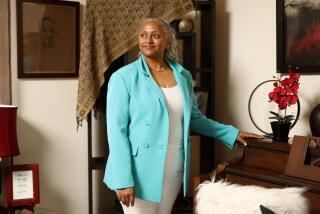Madison Ave. Agencies Develop Merger Mania
- Share via
Merger mania, already infecting much of the Fortune 500, is spreading to Madison Avenue, where some of the largest advertising agencies have recently been swallowing each other up. The reason, experts say, is to build bigger staffs to better serve huge corporations selling products worldwide.
“As clients merge on one side of the table, there is a need for agencies to grow bigger to handle the business--it’s simply more efficient,” said James D. Dougherty, vice president of research for the investment house F. Eberstadt in New York. Clients “want to buy more services from the same source,” he said.
Nearly all sizable advertising firms now operating in the United States are the product of at least one merger.
“In order to handle the growingly complex needs of marketers, agencies have been getting bigger,” said Alan Gottesman, an advertising analyst for the investment house L. F. Rothschild, Unterberg, Towbin.
But earlier mergers involved mostly smaller firms. Sunday’s announced merger of No. 7 BBDO International, No. 13 Doyle Dane Bernbach Group and No. 19 Needham Harper Worldwide accelerates a trend of big agencies consolidating in order to attract business.
Huge advertising agencies, with extensive research and production capabilities and offices spanning the globe from Tokyo to Rome, offer “one-stop shopping” for those companies seeking to draw up a coherent strategy for selling their products in diverse world markets, industry analysts said.
Big agencies can handle a host of promotional assignments ranging from executing a direct-mail campaign or even helping to name or design packages for new products.
Larger size also means that an agency has more staff, better access to production equipment, greater research capabilities and often more influence with those selling commercial time and space. Such influence could mean a favored location at the front of a magazine or the leadoff spot in a cluster of television commercials.
Christine McGlasson, advertising director for the Almond Growers Exchange in Sacramento said in an interview just before the merger that, all things being equal, she prefers a “the larger advertising firm because it has more resources” and less time is spent keeping track of production tasks if they are all handled by one agency.
The planned merger of BBDO, Doyle Dane and Needham was the third major recent consolidation in the advertising industry, which has been troubled by slower growth because of a slump in national television and magazine advertising.
Saatchi & Saatchi PLC, a London-based group of communications and consulting concerns, said April 14 that it had acquired Backer & Spielvogel, a New York-based advertising agency.
Three days later, Chicago-based Foote, Cone & Belding Communications, said it planned to merge its New York office with Leber Katz Partners, a New York-based agency, and operate the new entity as FCB-Leber Katz Partners.
The combination announced Sunday is a three-way affair that would produce the largest ad agency group in the world, with billings of about $5 billion. (Billings are the cost of advertising placed through an agency. The agency typically is paid 15% of billings.)
Although the recent wave of corporate mergers--such as General Electric and RCA, General Motors and Hughes Aircraft and R. J. Reynolds Inc. and Nabisco Brands--has forged a lucrative new economic environment in advertising, it has created considerable concern about potential business conflicts as well.
To facilitate the Doyle Dane merger, for example, Needham Worldwide is having to drop foreign car importer American Honda because merging partner BBDO handles Volkswagen of America cars. Doyle Dane represents Chrysler, but the domestic car maker was not deemed a potential conflict.
Gottesman of L. F. Rothschild, however, asserts that “conflict is in the eye of the beholder.” He adds that big companies are probably more interested in the cost efficiency and resources of their advertising agencies than what other clients they may represent.
But, he added, consolidation should pose no bigger problems than they have in the past. “Advertising agencies have been merging since time immemorial,” Gottesman said. “It’s just gotten big to the point where people notice.”
THE 20 BIGGEST AD AGENCIES WORLDWIDE
1985 1985 revenue billings Ranked by revenue $ in millions $ in billions 1 Young & Rubicam $536 3.58 2 Ogilvy Group 481 3.32 3 Dentsu 473 3.62 4 Ted Bates Worldwide 466 3.11 5 J. Walter Thompson 451 3.01 6 Saatchi & Saatchi Compton Worldwide 441 3.03 7 BBDO International 377 2.52 8 McCann-Erickson Worldwide 345 2.30 9 D’Arcy Masius Benton & Bowles 320 2.18 10 Foote, Cone & Belding Communications 85 1.90 11 Leo Burnett 269 1.87 12 Grey Advertising 259 1.73 13 Doyle Dane Bernbach Group 232 1.67 14 Hakuhodo International 199 1.53 15 SSC&B;:Lintas Worldwide 191 1.30 16 Bozell, Jacobs, Kenyon & Eckardt 74 1.22 17 Marschalk Campbell-Ewald Worldwide 150 1.00 18 Eurocom Group 29 0.87 19 Needham Harper Worldwide 127 0.85 20 Dancer Fitzgerald Sample 122 0.88
More to Read
Inside the business of entertainment
The Wide Shot brings you news, analysis and insights on everything from streaming wars to production — and what it all means for the future.
You may occasionally receive promotional content from the Los Angeles Times.










